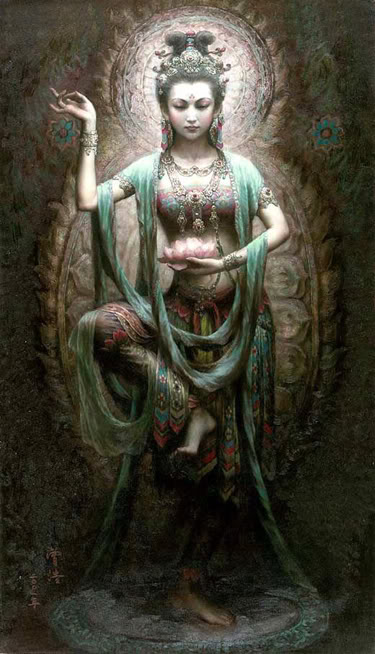Wishing everyone a Happy and Blessed Mabon. If you missed my Mabon post, I hope you'll enjoy it now!
I also added a Mabon Apple Harvest Ritual to my 'Sabbat and Esbat Ritual Pages' if you're looking for a simple, yet meaningful, Mabon ritual.
My Yule Altar
Brian and I are going to the Winter Solstice/Yule celebration on December 21st at Circle Sanctuary. Although I practice as a Solitary, it will be nice to celebrate the Sabbat with others who share in my beliefs.As the Wheel of the Year turns and the days get shorter, the skies become gray and it seems as though the sun is dying, it's in this time of darkness we pause at the Winter Solstice to celebrate something wonderful. On Yule, the sun stops its decline into the south. For a few days it seems as though it’s rising in exactly the same place . . . and then an amazing, wonderful, and miraculous thing happens - the light begins to return!In celebration of the Sun's return, the most important part of any Yule festivity is light which could include candles, a fire in the hearth or even a bonfire. It is customary to burn a Yule log to honour the Lord Cernunnos or the Horned God. Because each type of wood is associated with various magickal and spiritual properties, logs from different types of trees might be burned to get a variety of effects. Aspen is the wood of choice for spiritual understanding, while the mighty oak is symbolic of strength and wisdom. A family hoping for a year of prosperity might burn a log of pine, while a couple hoping to be blessed with fertility would drag a bough of birch to their hearth.This year we'll be making our Yule log out of pine. Here's how to make a basic Yule log . . .A picture from the internet - I'll replace it once my own Yule log is made. Isn't this one pretty?
Most of these items can be gathered outside or found easily enough at craft stores or the supermarket. Just keep in mind you'll be burning the log on your Yule fire so you'll want to use as close to nature as you can. And remember, only pick up items found on the ground, rather than taking cuttings from live plants.



At the heart of the constellation Scorpius, the red giant star Antares burns with a fiery intensity matched by astrological Scorpio’s passionate temperament. Ruled by Pluto, Greek God of the Netherworld, Scorpio is intimately connected with the extremes of life, with beginnings and endings, conception and lasting legacies.
As the sign of purpose and success, the dedication and drive of Scorpio is unmatched. Of course, if a Scorpio’s anger is aroused, or she feels out of control and disordered, the sting of rebuke will be unmistakable! Scorpios thrive in pursuits that require intuition and deeper understanding, including medicine, spirituality, and philosophy.







At morn, at noon, at twilight dim,
Lady thou hast heard my hymn.
In joy and woe, in good and ill,
Goddess, Mother, be with me still.
When the hours flew brightly by
And not a cloud obscured the sky,
My soul, lest it should truant be,
Thy grace did guide to thine and thee.
Now, when storms of fate o'ercast,
Darkly my present and my past,
Let my future radiant shine
With sweet hope of thee and thine.
~ Edgar Allan Poe ~
















This blog is dedicated to women from all walks of life . . . be you young or old, rich or poor, happy or sad, overweight or skinny, found your truth or not . . . you all have a divine purpose and it is my hope that this blog will inspire you, encourage you, make you laugh, make you cry . . . whatever it is YOU need today, I hope you find it here.
Love and Light,
Teresa
